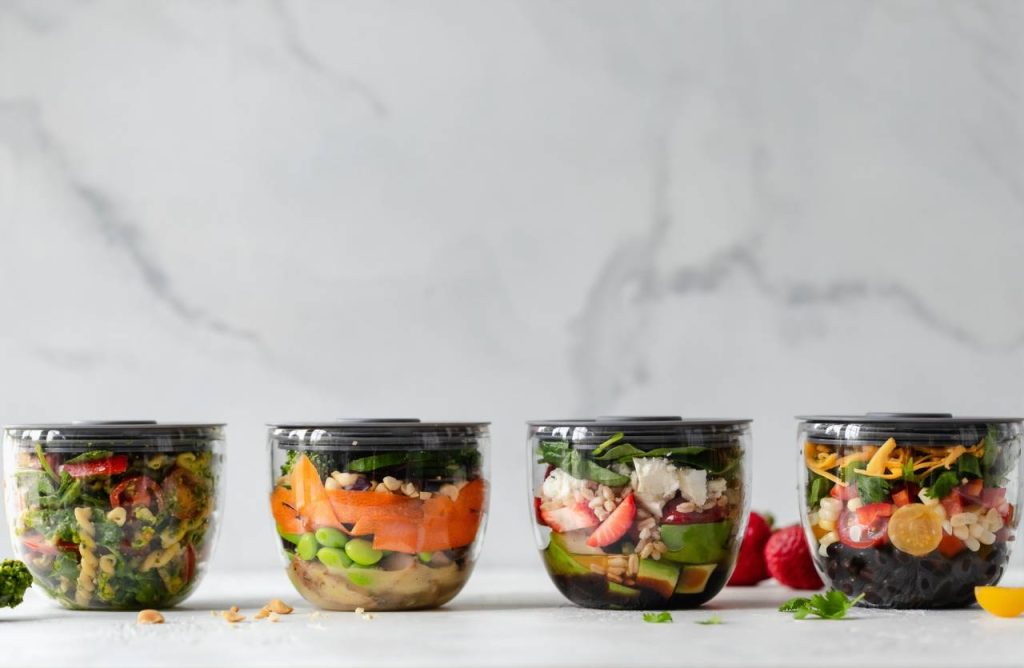Trends drive business changes because consumers pay attention to them.
At the rise of e-commerce, many physical retail stores have gone online or added an online platform. The popularity of mobile usage has prompted brands to ensure their websites are responsive. And consumer concerns over environmental issues are encouraging companies to adapt eco-friendly practice.
So what happens to your plastic container packages?
Is Plastic Container Eco-Friendly?

When you’re in the food business, your packaging may mostly be plastic. You may be using a plastic box or tub because these are affordable and flexible; since they’re transparent, they also display your products. And plastic has always been part of the packaging for the food industry, from processed food to fast food chains.
But not all plastic materials are bad for the environment because some may be recyclable.
What are the types of plastic to use for packaging?
Polyethylene Terephthalate
Also called PETE or PET, this type of plastic packaging is lightweight. It’s not just safe but also easy to recycle. So it’s become an ideal packaging for salad dressing, beverages, oil, water and jam or jelly.
High-Density Polyethylene
When it comes to packaging for cereal, juice or milk, HDPE is the usual low-risk plastic container of choice.
Low-Density Polyethylene
For businesses that use food wrappers, bread bags or grocery bags, LDPE is the ideal plastic. It’s safe and has strong heat resistance. But it’s not recyclable and should not be reused or repurposed.
Polypropylene
For businesses that need plastic tub or container packaging for yogurt or prepared food, PP is a good choice for its heat resistance.
Polystyrene
It’s also called Styrofoam. This plastic packaging can be made as a tub, bowl, box or cutlery. Businesses use it to package food, but it’s not safe when it encounters heat; it may leach toxic chemicals.
Other packaging materials use polycarbonate or the bioplastic polylactide; some use more than one plastic material.
What about polylactic acid (PLA) plastic? Would PLA make a better option as a plastic container or box for your products?
PLA would make a good substitute to single-use plastics since:
- Its made from organic materials: sugarcane, corn or cassava;
- It takes up 65 percent less energy to produce, and
- It produces 68 percent fewer greenhouse gases
But it doesn’t degrade fast enough. Only when PLA follows end-of-life scenario does it become eco-friendly.
What are Your Alternatives to Plastic Containers?

As consumers pay attention to the volume of plastic waste ending up on landfills — and worse, the oceans, buying decisions are shifting away from single-use plastics. And governments across the globe are following suit with policies on managing as well as minimizing waste. This includes placing a ban on single-use plastics and strengthening bills on recycling plastic packaging.
Although the US has yet to catch up with other countries that implement better regulations, it’s still taking significant steps toward sustainable packaging.
For example, some states have passed laws obliging manufacturers to help pay for the cost of collection and processing for packaging. This approach is part of the extended producer responsibility, which limits the life-cycle environmental impacts of packaging.
Your food business may be contributor to the volume of plastic waste in the country. Instead of relying on plastic boxes, tubs or containers, why not look into natural alternatives to packaging your food?
- Seaweed-based packaging – it not only dissolves in water and decomposes in nature, but it’s also edible.
- Pressed hay packaging – it looks like a nest, making it the perfect packaging for eggs.
- Mushroom packaging – it’s thermally-insulating and when added to soil, composts in 45 days.
If natural alternatives still seem too costly or too unfamiliar, consider paperboard or chipboard. Both are made to be food-grade, so they’re ideal for food businesses. Your boxed package goods may even be more attractive to consumers in the grocery stores or restaurants.
Aside from replacing your plastic packaging with natural alternatives, encourage your customers to ditch the plastic habit. You can:
- Do away with single-use cutlery for take-away food
- Provide customers with reusable bags and ban single-use plastic bags
- Replace single-use straws with reusable ones, like glass or stainless steel
Plastic containers, tubs, boxes and cutleries devastate the environment. They end up in landfills and oceans. Not only do nonbiodegradable packaging pollute the environment, but they also impact wildlife. Although you may be motivated initially to shift away from single-use plastics because consumers demand it, your decision will also be favorable for the environment.
Packaging as a Business Strategy
The product packaging you choose is a crucial business strategy.
The right packaging design establishes your company as a reliable brand. It determines consumer appeal, product quality and eventually, your profitability. But when you’re considering the material, you’re also determining the sustainability of your product packaging — a strategy that is attractive to consumers.

